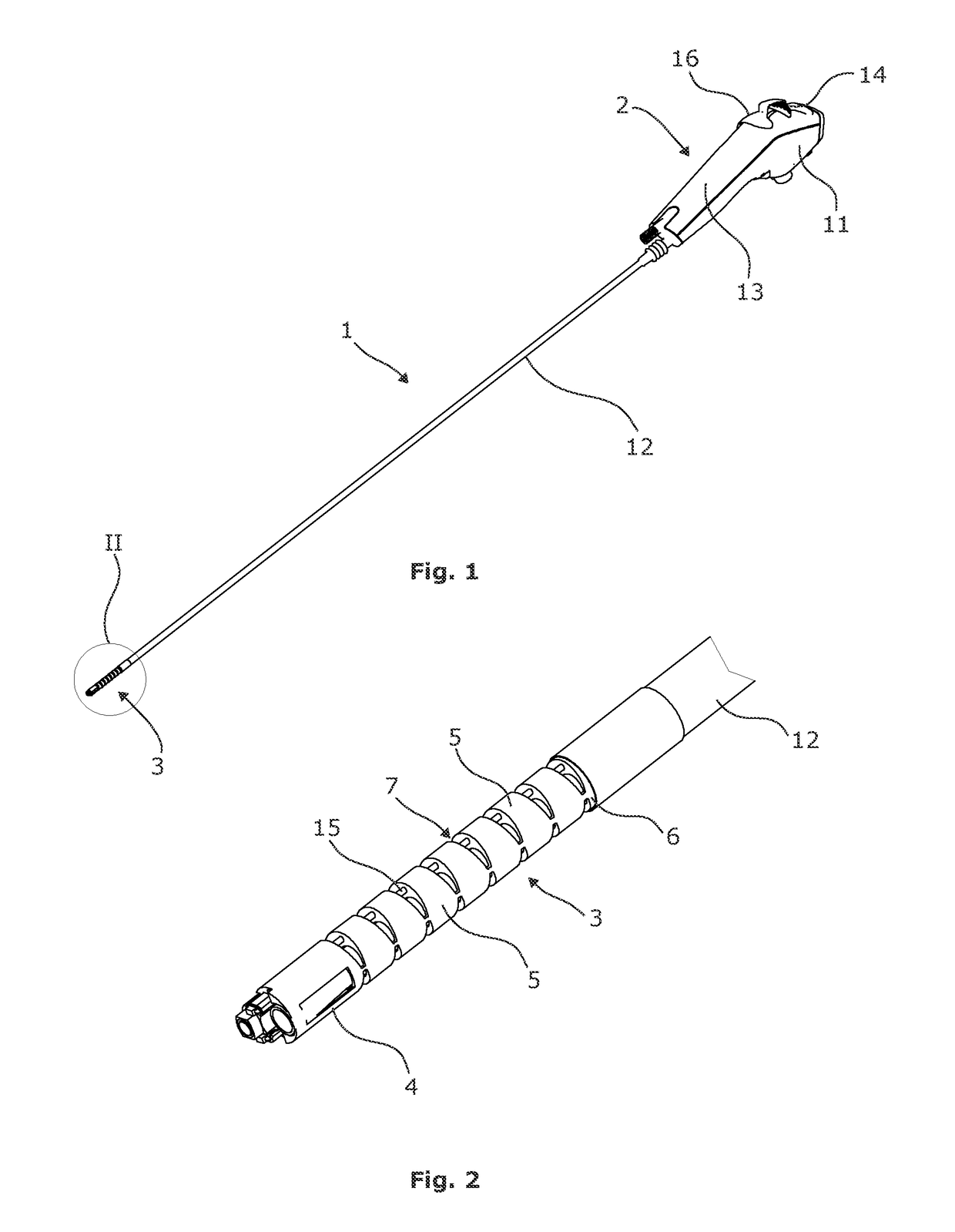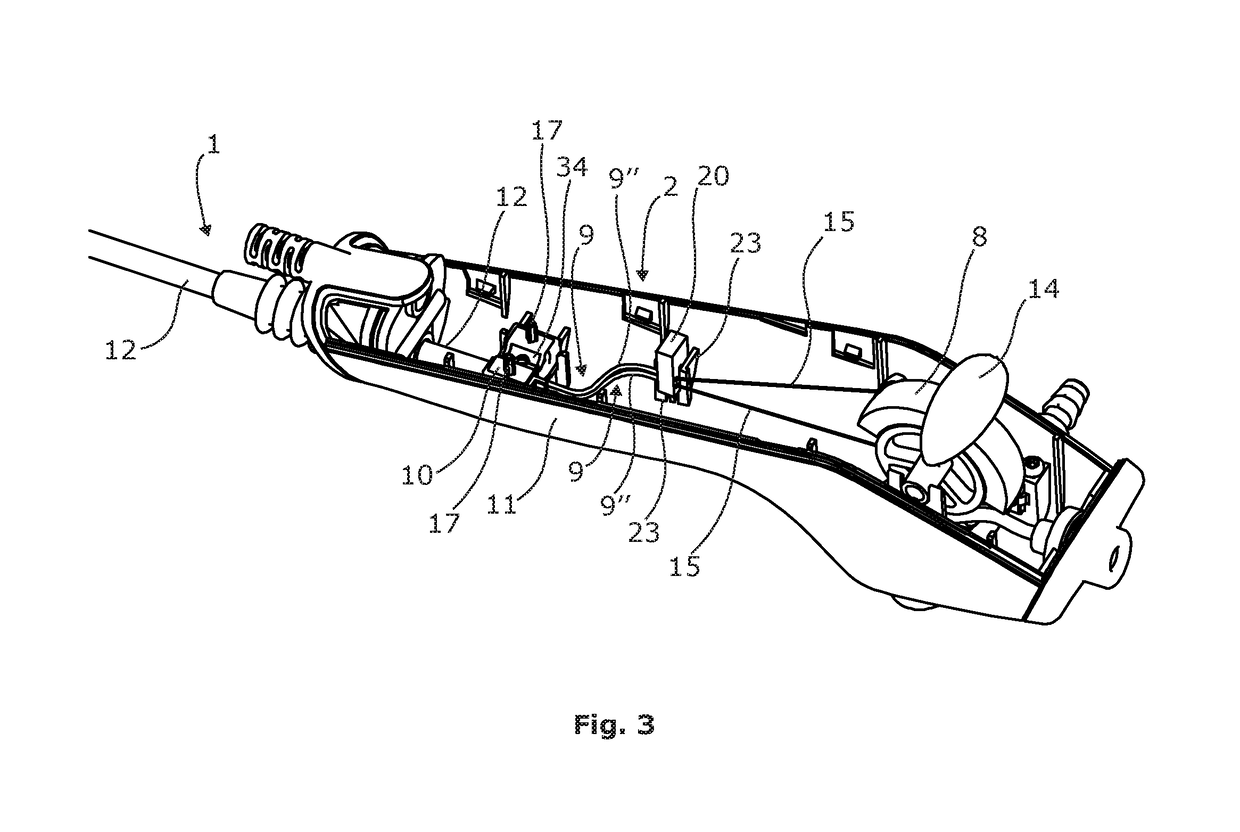Apparatus for maintaining a tensioned pull-wire in an endoscope
a pull-wire and endoscope technology, applied in the field of apparatus for maintaining a tensioned pull-wire in an endoscope, can solve the problems of affecting the function of the bowden cable, affecting the and complicated arrangement, etc., and achieves the effect of easy adaptation, good resistance to meandering and warping, and simple operation of the endoscope handl
- Summary
- Abstract
- Description
- Claims
- Application Information
AI Technical Summary
Benefits of technology
Problems solved by technology
Method used
Image
Examples
Embodiment Construction
[0012]Based on this prior art it is the object of the present invention to provide an endoscope, preferably a disposable endoscope, which is ready for use even if the relative lengths between the inner pull-wire and the outer guide tube has changed because the guide tube has shrunk between the time of manufacture and the time of use.
[0013]According to a first aspect of the invention this object is achieved by a control mechanism for an endoscope comprising a Bowden cable with an outer guide tube having a first length between a proximal and a distal end of said outer guide tube and an inner pull-wire having a second length between a proximal end and a distal end of said inner pull-wire, said second length being longer than said first length, characterized in that the outer guide tube comprises a first guide tube section and a second guide tube section, where said first guide tube section has plastic and elastic properties, which are different from the plastic and elastic properties o...
PUM
 Login to View More
Login to View More Abstract
Description
Claims
Application Information
 Login to View More
Login to View More - R&D
- Intellectual Property
- Life Sciences
- Materials
- Tech Scout
- Unparalleled Data Quality
- Higher Quality Content
- 60% Fewer Hallucinations
Browse by: Latest US Patents, China's latest patents, Technical Efficacy Thesaurus, Application Domain, Technology Topic, Popular Technical Reports.
© 2025 PatSnap. All rights reserved.Legal|Privacy policy|Modern Slavery Act Transparency Statement|Sitemap|About US| Contact US: help@patsnap.com



